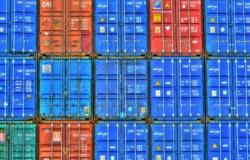Impact of Export Credit Agencies on Exports: Evidence from the US EXIM Bank

Natasha Agarwal and Zheng Wang investigate the impact of US EXIM Bank on US exports.
With heightening debate around the functions and lending activities/practices of national export credit agencies (ECAs), there appears to be rather limited empirical evidence that would help steer the debate into clarity. A case in point is that of the US Export Import Bank (EXIM or the Bank, hereafter), the official national export credit agency of the United States whose mission is to assist in financing and facilitating US exports of goods and services thereby contributing to US employment. In doing so, it seeks to counter government-backed financing offered by foreign countries through their ECAs.
The Bank appears to have done well in the overall scheme of things. Official figures and anecdotal evidence suggests that the Bank’s support has enabled American exporters to compete in the global marketplace.(1)
Yet an inquiry, undertaken in our research paper, on the Bank’s authorization portfolio from 2007 through 2013 paints a relatively different picture.(2) The Bank does not necessarily authorize its available funds to those countries and industries that dominate the US exports. For instance, India received a maximum 10.96% share of the Bank’s portfolio followed by Saudi Arabia at 10.55%. Nevertheless, total exports to India and Saudi Arabia accounted for only 1.46% and 1.08% share of total US exports as against the maximum 20.76% share of total US exports to Canada who received only 1.60% share in the Bank’s portfolio. In a similar vein, while aerospace products and parts (NAICS 3364) received a maximum 49.09% share of the Bank’s portfolio, its exports accounted for only 2.19% of total US exports as opposed to the maximum 6.22% share of petroleum and coal products (NAICS 3240) exports that received only 0.06% share in the Bank’s authorization.
Moreover, Bank’s authorization towards small businesses ranges from 5% to 11% for the period 2007 through 2013 which is well below the mandated 20%.(3) Interestingly, Bank’s authorization to small businesses is lowest in regions that receive the highest share in the Bank’s total authorization portfolio. For instance, for the period 2007 through 2013, Asian region received the highest share of the Bank’s total authorization portfolio at 34.4%, of which only 2% was authorized to small businesses. Caribbean region falls on the other end of the spectrum.
Given the findings from the initial investigation, the question really is if EXIM authorization really has an impact on US exports? Is this impact masked with heterogeneity across industries, and size of American companies? Is the impact affected by competition from other countries ECA-financed exporting activities particularly in the wake of international institutional arrangements like the OECD Arrangement on Officially Supported Exported Credits?
We find no detectable evidence on the export-promoting effects of EXIM authorization. However, further inspection reveals that this insignificant effect masks heterogeneities: EXIM authorizations to all sectors except for aerospace products and parts (NAICS 3364) has a significantly positive effect on US exports, and that this effect is observable for American companies that are not classified as small by the Bank. Furthermore, we find that positive average export-promoting effect of EXIM authorization is not affected by competition from foreign government ECA-financed exporting activities, and that this effect is neither affected by foreign governments’ accession to the Arrangement nor by the size of American companies that received EXIM assistance. We continue to find that the general ineffectiveness of EXIM authorization is robust when taking into account the heterogeneity associated with an industry’s position in the value chain, and when accounting for the possibility of influences that may spill over across sectors.
The findings in this paper have important policy implications for policymakers from both the US and other countries across the world, in general. It brings to attention the importance of going beyond evaluating a general export-promoting effect of ECA financing, and exploring the heterogeneity behind this general effect across various country-relevant dimensions. It calls attention to the significance of ECAs in offsetting competition from other countries ECA-financed exporting activities. Consequently, it revives the political debate on whether resorting to domestic institutions is the answer to improving trade competitiveness or does it not lead to protectionism through subsidizes, and further aggravate market distortions, domestically and internationally. It also rekindles the debate on countries binding constraints under various international institutional arrangements, and the countering effect on countries international commitments from accession to these arrangements.
Undertaking a detailed project level analysis to reveal the effectiveness of financial assistance provided by ECAs may provide answer in developing countries such as India where financial regulators refuse to open their kitty to the country’s ECA, Indian EXIM Bank.
Natasha Agarwal (PhD) is an independent research economist affiliated with the World Education Foundation. Zheng Wang (PhD) is a lecturer in economics at Hull University Business School. They both work in the area of international trade and political economy.
Photo credit: Glyn Lowe Photoworks. via StoolsFair / CC BY
Endnotes
1. See the Annual Reports of the US EXIM Bank.
2. The Bank’s authorization portfolio from 2007 through 2013 is available under the US government’s Open Government Data archive.
3. See Section 635(b)(1)(E)(v) of the US Code Title 12 “Banks and Banking”. Note that this threshold was raised to 25% in December 2015; see Section 2(b)(1)(E)(v), the Charter.


